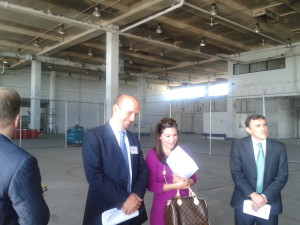
Last year, I had the opportunity to tour the site of the new cold-storage facility at O’Hare Airport. (Like any good writer, I took the tour without neither assignment nor deadline, and good luck getting any writer to write anything without a deadline in hand.) The tour was organized by the government of Ecuador, in large part to promote its rose growers. The nation’s economy is 5.9% agriculture, and rose crops represent a high-end, high-margin export product. The trick is that roses are highly perishable. That’s one of the reasons they are so special. Ecuadorian growers ship by air, and only to facilities that can handle temperature-controlled products in transit.
That’s why this facility was a big deal. The tour had three purposes: to show the press the great care that goes into Ecuadorian roses; to show O’Hare officials that this was an important venture for Ecuador’s economy; and to show the growers that this project was going to happen so that they could incorporate it into their marketing plans.
From the standpoint of an emerging markets investor, the tour showed just how many components go into trade and economic growth. It’s not easy. An Ecuadorian grower can’t sell roses to the U.S. unless it can be assured that the product will be safe every step of the way. And that means specialized customs facilities at major airports.
The magnitude of the work is astonishing. Few nations have self-contained markets. Ecuador has 15.6 million people and a per-capita GDP of $10,600. Bootstrapping will take a long time. Export markets are a faster source of growth, but they can’t be willed into existence.


